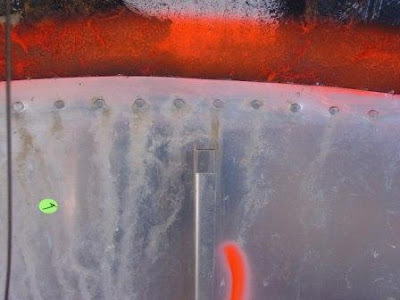Those of you that haven't, I do send out samples when I can.
First, I start out with a good cut of meat. I don't think you can make a silk purse out of a sows ear! Like Airstreams, start with the best and hopefully, with enough hard work, you will end up with the best!
This will end up as less than one pound of jerky.

First step is to sharpen your knives. One of my other odd quirks is sharp knives. I have about six or seven different knife sharpeners. My current favorite system is called "Edge Pro". There is nothing like trying to slice raw, wiggly meat with a dull knife.

After trimming off all surface fat I slice the eye in half length wise then male 1/4 inch thick slices.
I lay them out on a baking sheet in a single layer.

I then sprinkle them with a mixture of curing agents and a homemade Cajun mixture. Then flip them over and do the other side. It then goes in the refrigerator for 24-36 hours for the cure to work. I also make other flavors.

This is a Cajun spice I made for Marc in Washington. I ship this stuff all over the US. Some has even made it up to Maryland!

The real secret to good jerky is the proper refreshments while making it. This one is for you, Marcus!

Then it goes into a dryer. I don't smoke it anymore as it is difficult to get a uniform taste. Every piece of meat absorbs smoke differently. Some tasted great, some tasted like we had a forest fire in the kitchen. I get the flavor from the spices.

A close up view. The hardest part is to dry it enough to preserve it but not so dry that it is like eating ceramic tile.

I then vacuum seal it and put on a label.


As usual, this is all done under the watchful eye of the "Boss". Believe me, if anything falls on the floor there is no 5 second rule. The boss gets any accidents, plus any trimmings.










































